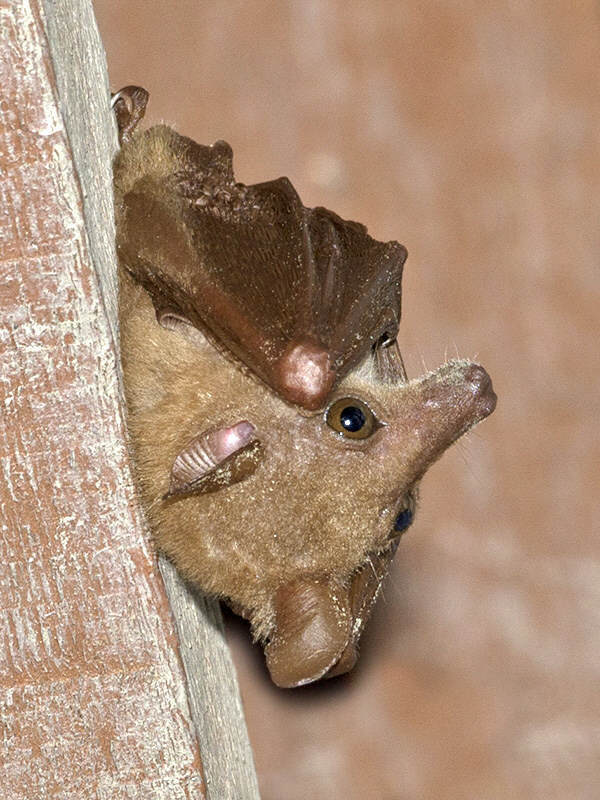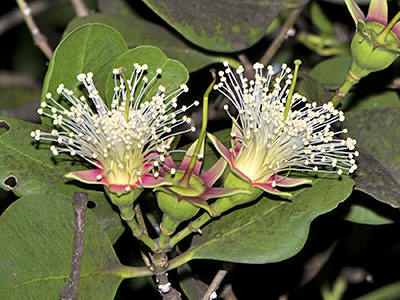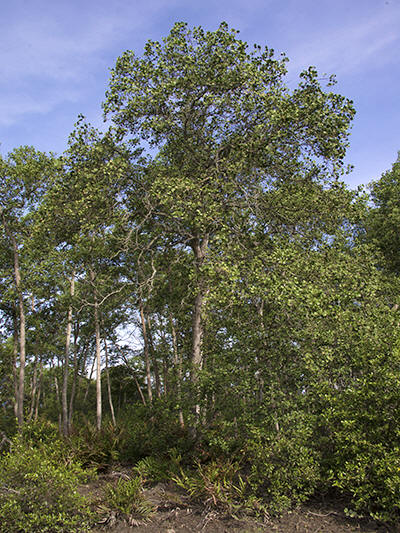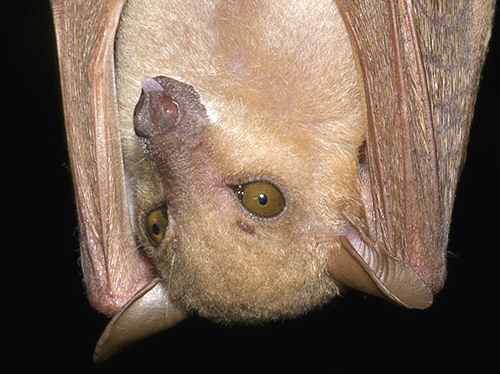
Fig 1

Fig 2

Fig 3

Fig 4
|
Order : CHIROPTERA
Family : Pteropodidae
Species : Macroglossus minimus
Forearm Length : up to 4.4 cm
Weight : up to 18 grams
Macroglossus minimus (Lesser Long-tongued Nectar Bat) is a small, nectar-feeding bat which occurs in a broad range of wooded or disturbed,
rural habitats. They particularly favour mangrove, where they feed on the
nectar of blossoms of Sonneratia trees, and in doing so play an
important role as pollinators which thereby contributes to forest regrowth in such habitats.
In other forest habitats they favour the flowers of wild banana trees, and in rural areas
they favour cultivated banana trees. They are also known to visit
the flowers of durian, coconut and jambu (Syzygium samarangense) (Phillipps & Phillipps, 2015).
By day, they roost alone or in small groups, typically beneath large palm leaves.
There are two species of bat in the genus Macroglossus, and this is the smaller of the two.
The other species is the closely-related Greater Long-tongued Nectar Bat
Macroglossus sobrinus.
'Macroglossus' means 'large-tongued' - this refers to their
long, slender, tongue which has evolved to probe deep inside
flowers in search of nectar. They also have a slender, elongate muzzle and
teeth which are much reduced in size, apart from the canines which are
narrow and sharply pointed.
Macroglossus minimus has light brown fur, which is paler on the
underside, and dark brown wings. They have a distinctive groove on the upper lip
between the nostrils: this feature can be used to distinguish the species
from its larger cousin which lacks such a feature.
Macroglossus minimus has a broad distribution, and is known to occur in Thailand,
Cambodia, southern Vietnam, Peninsular Malaysia, Singapore, most of
Indonesia, Brunei, Philippines, Timor-Leste and the western Pacific (i.e.
Papua New Guinea, Solomon Islands, northern Australia).
Fig 1 : Example from the coastal town of Muar in the state of Johor,
Peninsular Malaysia. This bat is taking a break between feeding sessions on
a nearby Sonneratia tree in back-mangrove. Note the presence of a
fine dusting of pollen on the snout and ears.
Fig 2 : Sonneratia blooms in back-mangrove: a number of
Macroglossus minimus were seen feeding briefly on these flowers.
Fig 3 : When in bloom, this tall Sonneratia tree is visited nightly
by
Macroglossus minimus.
Fig 4 : Another example from back-mangrove, showing the pale fur on the
chest and belly.
References :
Francis, C.M. 2019. A Field Guide to the Mammals of South-east Asia. Second
Edition. New Holland. 416 pp.
Francis, C., Rosell-Ambal, G., Sedlock, J., Ingle, N., McKenzie, G. &
Richards, N. 2008. Macroglossus minimus. The IUCN Red List of
Threatened Species 2008: e.T12594A3363390.
Lekagul, B., McNeely, J., 1977. Mammals of Thailand. Association for the
Conservation of Wildlife, Thailand. 758 pp.
Phillipps Q. & Phillipps K. (2016). Phillipps’ Field Guide to the
Mammals of Borneo and Their Ecology: Sabah, Sarawak, Brunei, and Kalimantan.
Second Edition. John Beaufoy Publishing. 400 pp.
|